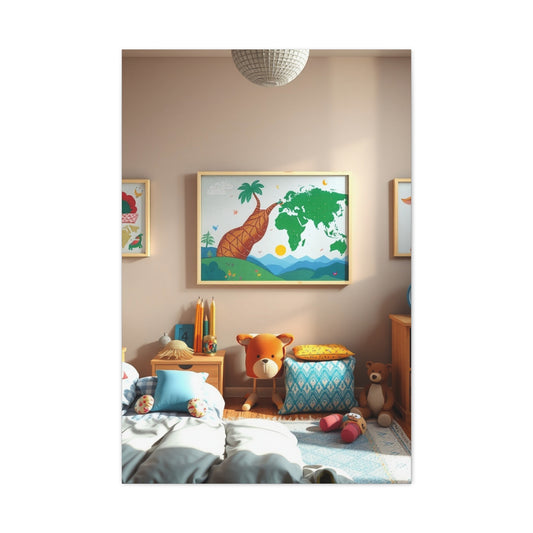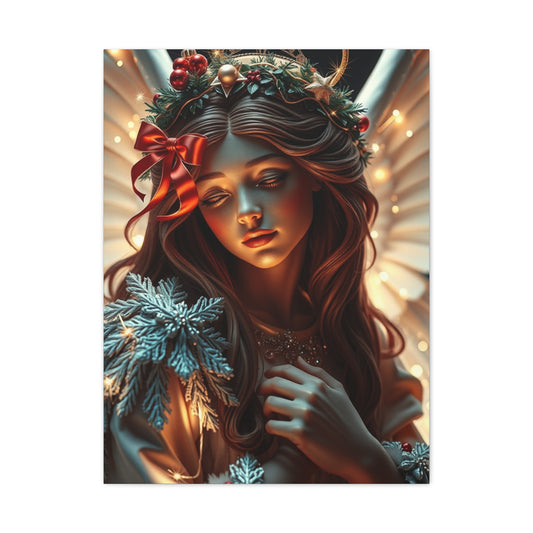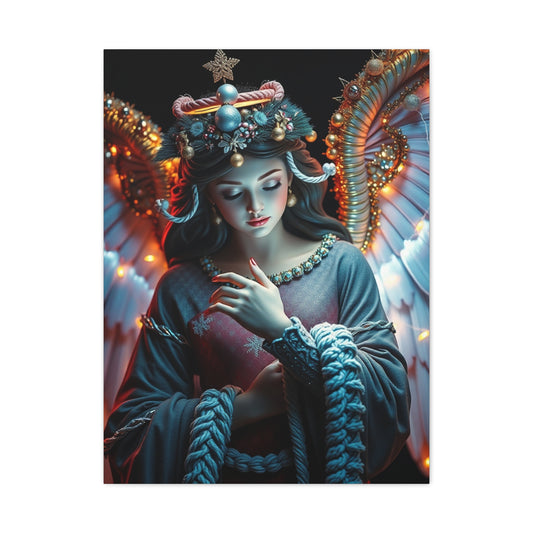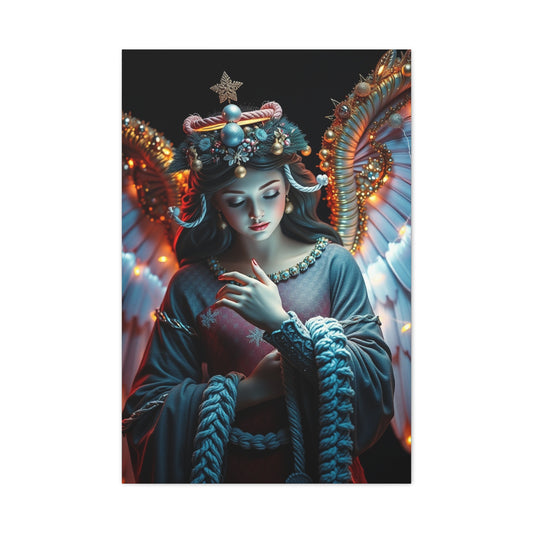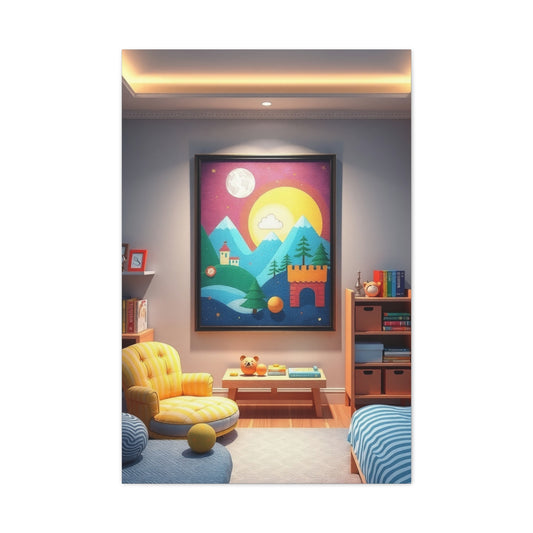When it comes to essential lenses in any photographer’s kit, prime lenses are often the star. While zoom lenses offer impressive versatility, prime lenses hold a special place in the photography world because of their sharpness, speed, and simplicity. As you evolve in your photography journey, one of the most critical questions you’ll face is whether to add a 35mm or a 50mm prime lens to your collection. Each lens has its unique characteristics, and understanding the distinct advantages of both will help you make an informed decision that aligns with your photographic style and needs.
Prime lenses are lenses with a fixed focal length, meaning you can't zoom in or out. Unlike their zoom lens counterparts, which offer a wide range of focal lengths, prime lenses require you to physically move to adjust your composition, making them an entirely different kind of tool. This limitation encourages creativity, forcing photographers to engage with their subjects more deliberately.
Understanding the Differences Between 35mm and 50mm Lenses
The 35mm lens is often regarded as a versatile option for a wide variety of shooting scenarios, particularly in street photography and documentary work. Its wide field of view allows you to capture dynamic scenes with more context and details, making it perfect for capturing the hustle and bustle of urban life or the subtle nuances of everyday moments. The 35mm lens provides a broader perspective, which means you can include more of your surroundings in the frame, making it an excellent choice for wide shots and environmental portraits. It’s a lens that encourages you to get closer to your subject, making it perfect for storytelling in a single shot.
On the other hand, the 50mm prime lens is often referred to as the "standard lens" because its focal length closely resembles the human eye’s field of view. This similarity provides a natural, undistorted view of the world, which many photographers prefer for a wide range of photography styles, from portraits to still life and even landscapes. Because of its perspective, a 50mm lens often feels more intuitive to use, as it mimics what we naturally see with our eyes. It's also a favored choice for portrait photographers, as the perspective is flattering and doesn't distort facial features the way wider lenses might.
Despite both lenses being excellent choices for a variety of scenarios, the 35mm and 50mm differ significantly in their ability to frame shots. The 35mm offers a wider field of view, making it easier to fit more subjects into the frame. This is especially useful when working in tight spaces or when you want to include more of the environment in your image. The 50mm lens, however, has a narrower view, which often leads to more focused compositions. It can create a tighter, more intimate shot that isolates the subject against a blurred background.
When it comes to choosing between these two lenses, one of the most important factors to consider is the type of photography you plan to do. If you’re looking to capture expansive scenes, environmental portraits, or active moments, a 35mm might be the better option. But if you're more interested in creating clean, sharp portraits or have a preference for a classic, natural perspective, a 50mm will serve you well.
Aperture and Depth of Field: How These Lenses Handle Light and Focus
Another key feature of prime lenses that separates them from zoom lenses is the aperture. The 35mm and 50mm lenses are known for their wide apertures, often ranging from f/1.4 to f/1.8, which gives you greater flexibility in low-light environments and allows you to achieve a shallow depth of field for beautiful background blur or bokeh. The wide aperture lets in more light, making both lenses perfect for shooting in dimly lit conditions without needing to boost your ISO or use a flash.
One of the main advantages of a wide aperture is the ability to achieve a shallow depth of field. This characteristic is especially desirable for portrait photographers who want to isolate their subject from the background, creating a pleasing bokeh effect. Both the 35mm and 50mm lenses are capable of delivering stunning background blur, but the effect can be more pronounced with the 50mm lens due to its slightly longer focal length. A 50mm lens can provide even more subject isolation, making it an ideal choice for those looking to create portraits with a soft, dreamy background.
The shallow depth of field from these lenses allows for greater control over where the viewer’s attention is drawn in an image. This creative control is what sets prime lenses apart from zoom lenses, which tend to have a deeper depth of field at wider apertures. The 35mm lens may not give you the same level of isolation as the 50mm, but it compensates by offering a wider depth of field, which is useful in scenarios where you want to keep more elements of the scene in focus. Whether you're shooting a portrait, a street scene, or an indoor setup, the aperture and depth of field of both lenses offer exceptional creative potential.
Choosing the Right Lens for Your Photography Style and Goals
Ultimately, deciding between the 35mm and 50mm lenses comes down to your personal preferences and photography style. While both lenses share many similarities, such as their ability to perform well in low light and their sharp optical quality, each excels in different areas depending on the kind of shots you want to capture. A 35mm lens offers a wider perspective, making it ideal for street photography, documentary shots, and environmental portraits. If you love telling stories through your images and want to include more of the scene, the 35mm will provide you with that extra context.
On the other hand, the 50mm lens excels in situations where you want to create a natural, intimate look. Whether you're shooting portraits, still life, or anything requiring a clean, unadulterated view of your subject, the 50mm lens will provide you with a sharp, clear perspective. It is a versatile option that works well in almost any photography scenario, from capturing landscapes to making detailed close-ups of a subject. For photographers who appreciate simplicity and clarity, the 50mm lens can often feel like a one-lens solution for a wide variety of shooting needs.
Both lenses share certain traits that make them ideal for photographers seeking high-quality images without the complexity of zoom lenses. Their lightweight construction makes them easy to carry for long shoots, and their compact size ensures you won't feel weighed down. Moreover, their simplicity forces photographers to think more critically about their composition and framing, something that zoom lenses, with their flexibility, don't always require.
While zoom lenses provide convenience by allowing you to change focal lengths without physically moving, they don’t necessarily offer the same sharpness or low-light performance as prime lenses. Zoom lenses may suffer from image quality degradation at the extreme ends of their zoom range, while prime lenses maintain consistent optical performance throughout their use. This quality is one reason why many photographers choose prime lenses for portraiture, landscape photography, and other styles that demand the highest level of sharpness and clarity.
When you add either a 35mm or 50mm lens to your kit, you’re investing in optical excellence. Both lenses are celebrated for their image quality, and their simple, fast designs make them favorites for both professional and amateur photographers. The decision comes down to your personal shooting style and the kind of photography you prefer.
The 35mm Prime Lens: A Versatile and Essential Wide-Angle Tool for Photographers
When it comes to wide-angle lenses, the 35mm prime lens is often regarded as the go-to option for photographers seeking a balance between versatility and performance. With its 54.4-degree field of view, the 35mm lens provides an expansive perspective that is ideal for a wide range of photographic applications. Whether you're capturing street scenes, landscapes, or even group portraits, the 35mm lens offers a broader and more dynamic view compared to other standard lenses like the 50mm. Its ability to capture more of the scene in a single shot makes it an excellent tool for shooting in tight or constrained spaces. The lens excels in providing a natural representation of the environment, making it perfect for a variety of shooting scenarios, especially in urban or architectural photography.
This lens is particularly favored by photographers who value a broader perspective and need to fit more into the frame without stepping back too much. It’s an essential tool for those working in confined spaces where the scene needs to be captured in its entirety, such as in narrow alleys, small rooms, or crowded street corners. Its wide-angle view helps capture the essence of an environment in a way that gives viewers a sense of the surroundings, adding depth and context to the subject. The flexibility of the 35mm lens makes it an indispensable companion for a wide variety of styles, whether it be photojournalism, street photography, or creative portraiture.
Moreover, the 35mm prime lens is an excellent choice for photographers who enjoy capturing the vibrancy of everyday life. Its wide perspective allows for a more immersive experience in the photograph, enabling you to present your subject in a larger context. Street photographers, for example, will find that the 35mm lens allows them to get close enough to their subjects without disturbing the natural flow of the scene, all while maintaining a sense of intimacy. It’s a lens that invites exploration, capturing the raw moments of life with an authenticity that other lenses may struggle to achieve.
Low-Light Performance and Flexibility in Diverse Conditions
One of the standout features of the 35mm prime lens is its impressive low-light performance. Many versions of the 35mm lens offer fast apertures, such as f/1.4 or f/1.8, which are perfect for shooting in dimly lit environments. This capability makes the lens a top choice for photographers who work in natural or available light and prefer to avoid using artificial lighting or high ISO settings. The large aperture allows more light to hit the sensor, which can be crucial when photographing indoors or at night. The ability to shoot in low light without sacrificing image quality is one of the reasons why the 35mm lens is often a favorite among documentary photographers and photojournalists.
Not only does the wide aperture make low-light photography more manageable, but it also allows for better control over depth of field. This control is vital for creating compelling compositions, whether you're shooting portraits or environmental scenes. With a shallow depth of field, you can blur out distracting backgrounds, drawing attention to the subject while keeping the surroundings in focus. Conversely, at smaller apertures, you can achieve a greater depth of field, making the 35mm lens highly adaptable to different shooting needs. Whether you're focusing on a small subject or an expansive landscape, the lens provides the flexibility to adjust your aperture settings to fit the situation.
Furthermore, the 35mm prime lens excels in creating beautiful bokeh effects, thanks to its wide aperture and optical design. This soft, out-of-focus blur helps isolate subjects from their environment, allowing photographers to create images that feel both dynamic and visually engaging. The quality of the bokeh produced by the 35mm lens can enhance the overall mood of a photo, whether you're capturing the softness of a portrait or the atmospheric qualities of a landscape.
Balancing Distortion and Portraiture: The 35mm's Unique Strengths and Challenges
While the 35mm prime lens offers numerous advantages in terms of field of view and flexibility, it does come with its own set of challenges, particularly when it comes to portraiture. The wide-angle nature of the lens can cause slight distortion when photographing subjects up close. This is especially evident in facial features, where a 35mm lens can make a subject's nose appear larger or their face more elongated than in real life. As a result, the 35mm is generally not the go-to lens for highly accurate or flattering headshots, where the precision of the lens in rendering proportions is more crucial.
However, despite this distortion, the 35mm lens still remains a highly effective option for full-body portraits or environmental portraits, where the subject is positioned farther away from the camera. The lens allows you to incorporate more of the environment into the shot, telling a richer story about the subject and their surroundings. This flexibility makes it an excellent choice for capturing people in dynamic environments, like urban streets or outdoor settings, where the subject is interacting with the broader world around them. In such cases, the slight distortion adds a sense of movement and energy to the shot, rather than detracting from it.
For photographers who prefer more traditional portraiture with less distortion, the 50mm prime lens is often favored for its more natural perspective. The 50mm lens creates a look that is closer to how the human eye perceives subjects, making it ideal for tighter, more focused portraits. However, the trade-off is that the 50mm lens doesn’t offer the same broad perspective and environmental context that the 35mm does. Ultimately, it comes down to the photographer’s intent and the type of story they wish to tell. For those who want to capture both the subject and the environment in one frame, the 35mm prime lens remains an excellent option.
Another challenge that may arise when using the 35mm lens is the potential for chromatic aberration, especially when shooting with high-contrast scenes. While most modern 35mm lenses come equipped with technology to reduce this effect, it’s still something to be mindful of when shooting in certain lighting conditions. Fortunately, this issue can often be corrected in post-processing, and many photographers find that the benefits of using a 35mm lens far outweigh these minor drawbacks.
Embracing the 35mm Lens for Creative Exploration
The 35mm prime lens provides photographers with an unparalleled level of creative freedom. It’s a lens that encourages exploration, enabling you to capture a wide range of subjects, from sweeping landscapes to intricate architectural details, all while maintaining a natural perspective. The lens offers sharpness and clarity, even at wide apertures, which makes it ideal for capturing intricate textures and fine details in your photos. Whether you're photographing a busy street corner, a dramatic landscape, or a quiet moment in a café, the 35mm lens allows you to do so with ease and precision.
What makes the 35mm prime lens truly special is its ability to balance technical performance with artistic expression. Unlike zoom lenses, which often sacrifice sharpness for convenience, the 35mm prime lens forces you to engage with your subject in a more deliberate way. You must physically move closer or farther from the subject to frame the shot, which encourages a deeper connection to the scene. This process of exploration not only improves your technical skills but also enhances your creative vision.
The 35mm lens is not just a tool for documentary or street photographers—it’s a lens that can inspire new ways of seeing and interpreting the world around you. Its wide perspective invites photographers to rethink their approach to composition, allowing for more dynamic and engaging images. Whether you're working with natural light or using the lens in combination with other tools like reflectors or flash units, the 35mm prime lens offers the versatility to adapt to a wide range of shooting conditions.
The 50mm Prime Lens: The Essential Tool for Portraits and Low-Light Performance
The 50mm prime lens, often affectionately known as the "nifty fifty," is revered for its simplicity, versatility, and outstanding performance. This lens has become a staple in the camera bags of photographers around the world, particularly for those who are just starting their photographic journey. Its focal length closely resembles the human eye's perspective, providing a natural and unembellished view of the world. This makes the 50mm lens particularly ideal for portrait photography, where accuracy in representing the subject with minimal distortion is vital. When it comes to capturing the essence of a person, the 50mm prime lens delivers results that are not only flattering but also engaging, with its sharpness and ability to create a sense of depth.
Unlike many zoom lenses that can introduce slight distortions, the 50mm lens excels in producing sharp, true-to-life images with minimal optical imperfections. Its optical quality is one of the reasons why it is so highly regarded among photographers, particularly in portrait photography. The lens's focal length offers a slightly telephoto perspective, allowing you to keep an ideal distance from your subject while still achieving tight, flattering compositions. This becomes especially important when photographing people who may not feel at ease with a photographer hovering just inches away. With the 50mm prime lens, you can maintain a respectful distance yet capture all the necessary details with a high level of clarity, ensuring that the subject feels comfortable while you shoot.
One of the core features that sets the 50mm lens apart is its ability to achieve a beautiful background blur, or bokeh, especially when used at wide apertures such as f/1.8 or f/1.4. This level of control over depth of field allows you to isolate your subject from the background, creating a visually captivating effect that brings attention to the person or object in focus. For portrait photographers, this is an invaluable tool that helps in crafting professional-quality results, even in the absence of complex lighting setups. The creamy, soft bokeh lends a timeless feel to your images, enhancing their visual appeal without requiring any additional equipment. Moreover, the wide aperture is crucial for low-light performance, enabling you to shoot in dimly lit conditions without compromising on image quality. Whether you're in a cozy indoor setting or capturing an evening portrait, the 50mm prime lens excels at delivering crisp, detailed images even in challenging lighting environments.
Low-Light Mastery and Image Quality
One of the standout features of the 50mm prime lens is its exceptional low-light performance. The lens's large maximum aperture, often ranging from f/1.8 to f/1.4, allows for more light to enter the camera's sensor. This is especially advantageous in low-light situations where you might otherwise struggle to get clear, sharp images. Whether you're photographing an indoor event, a dimly lit portrait session, or capturing a fleeting moment during twilight, the 50mm lens ensures you can work without a tripod or flash. Its wide aperture lets you maintain a fast shutter speed, minimizing the risk of motion blur and preserving the sharpness of your subject.
In addition to its low-light capabilities, the 50mm prime lens is also highly effective at producing images with a remarkable level of sharpness. Its optical design is tailored to deliver excellent clarity across the entire frame, making it a trusted choice for photographers who value precision. When paired with a high-resolution camera body, the 50mm lens will maximize the sensor’s potential, capturing fine details that might otherwise be lost with a lesser-quality lens. This sharpness is evident whether you're shooting portraits, product photography, or landscapes, offering versatility in many different types of photography.
The ability to shoot in low light without sacrificing image quality is a game-changer, particularly for photographers working in environments where flash or artificial lighting is not desirable. For example, capturing candid moments in social settings or photographing intimate portraits where the natural ambiance should be preserved is easily achievable with the 50mm prime lens. Its ability to gather light in low-light conditions means you can capture moments in their natural setting, with the surrounding environment intact, resulting in more authentic, atmospheric photographs.
Compact Design and Versatility
Another appealing feature of the 50mm lens is its compact and lightweight design. Unlike some of the bulkier zoom lenses, the 50mm prime lens is small, easy to carry, and unobtrusive, making it an excellent choice for photographers who value portability. Whether you're traveling or simply don’t want to carry heavy equipment, the 50mm lens is a perfect solution. Its portability allows you to shoot discreetly in various settings, capturing the moment without drawing attention to yourself. This makes the 50mm prime lens a go-to tool for street photography, travel photography, and candid shots, where having a non-intimidating, easy-to-use lens can be an advantage.
Despite its small size, the 50mm prime lens packs a punch in terms of image quality. While it may not have the zoom capabilities of other lenses, its fixed focal length challenges photographers to be more thoughtful about their compositions, often leading to more creative and intentional shots. The simplicity of a fixed focal length can encourage you to explore new angles, experiment with framing, and develop a deeper understanding of your subject. This can be particularly helpful for beginner photographers who may feel overwhelmed by the complexity of zoom lenses, as the 50mm lens forces you to move around your subject and develop a stronger sense of composition.
Beyond portrait photography, the 50mm lens is versatile enough for a range of applications. It performs excellently in product photography, where capturing clean, sharp images is paramount. The lens's ability to produce soft bokeh can make it ideal for isolating products against a blurred background, allowing the subject to stand out. Additionally, the 50mm lens is great for street photography, where its unobtrusive nature allows you to capture candid moments without being overly conspicuous. Its portability and sharpness make it a fantastic option for those who want to carry a single lens and still have the flexibility to shoot a variety of subjects with ease.
The Trade-Offs: Limitations of the 50mm Prime Lens
As with any piece of equipment, the 50mm prime lens does come with its limitations. While it excels in many areas, one of the common drawbacks is its somewhat restrictive field of view. In larger spaces, such as wide open landscapes or expansive architecture, the 50mm lens can feel limiting. It is a prime lens, meaning it lacks the zoom flexibility that can be useful for capturing wide-angle shots. This can be especially challenging when shooting in tight indoor spaces or crowded locations where you need to capture a broader perspective.
The solution to this problem is relatively simple, however: step back. The 50mm lens requires you to physically move to achieve the composition you want, which may not always be feasible in confined environments. For photographers who often work in tight spaces, a 35mm lens can be a more suitable alternative, offering a slightly wider field of view while maintaining a similar level of image quality. That said, the 50mm lens is still an outstanding choice for portrait photography, where a narrower focal length helps isolate the subject from the background and offers that iconic "bokeh" effect that many photographers cherish.
Another consideration is the fact that fixed focal length lenses like the 50mm require you to be more intentional with your compositions. This can be a blessing or a challenge, depending on your shooting style. For those who are used to the convenience of zoom lenses, the 50mm prime lens may feel a bit limiting at first. However, many photographers find that this constraint encourages more thoughtful, creative shooting, leading to stronger and more compelling images.
35mm Prime Lens: A Wider View for Creative Composition
For photographers who love capturing expansive landscapes, cityscapes, or intricate environmental details, the 35mm prime lens is an exceptional choice. With its wider field of view, it allows you to capture more of the scene without the need for multiple shots or excessive cropping. This is particularly advantageous for landscape photographers who want to create wide-angle shots that convey the grandeur and scale of a subject.
One of the standout features of the 35mm lens is its ability to maintain clarity across a broad area of the frame. The lens offers a wide perspective, making it easier to showcase sweeping vistas or intricate details in nature. Additionally, the 35mm lens is less prone to distortion than other wide-angle lenses, which can often lead to unnatural-looking curves in the image. Its relatively shallow depth of field also allows you to isolate subjects within a busy scene, offering greater flexibility in framing and composition.
Another advantage of the 35mm prime lens is its versatility in various lighting conditions. This lens typically has a fast aperture, meaning it can gather more light, which is useful when working in dimly lit environments or shooting during the golden hours of sunrise and sunset. The wider aperture allows photographers to maintain sharpness in the image while minimizing noise in low-light conditions.
50mm Prime Lens: Perfect for Portraiture and Subject Focus
On the other hand, the 50mm prime lens is often considered a go-to lens for portrait photographers, thanks to its ability to produce sharp, flattering images with beautiful background blur or bokeh. The 50mm lens offers a more natural perspective for human subjects, replicating what the human eye sees in terms of proportions and depth. This makes it particularly well-suited for capturing portraits that look realistic, with a true-to-life sense of scale.
The 50mm lens shines when it comes to its ability to create a shallow depth of field. For portrait photographers, this is crucial, as the ability to isolate the subject from the background is essential in creating visually compelling images. The shallow depth of field achieved with a 50mm lens helps to draw the viewer's attention directly to the subject, ensuring that the person or object in focus stands out sharply against a smooth, blurred background. This bokeh effect, when rendered well, can add a soft, ethereal quality to portraits, enhancing their emotional impact.
In addition to portraiture, the 50mm lens is also highly effective in low-light situations. Its wide aperture allows more light to reach the sensor, making it ideal for shooting indoors or at night. This feature is particularly useful for photographers who enjoy capturing intimate or spontaneous moments in settings where natural light is limited. The 50mm lens is also known for its sharpness and contrast, delivering stunningly detailed images that bring out the finer textures and subtle details of the subject.
Making the Choice: Which Lens Best Suits Your Style
Ultimately, the decision between a 35mm and a 50mm prime lens depends on your personal photographic style and the types of subjects you most enjoy capturing. Both lenses are exceptional in their own right, but they cater to different needs within the world of photography. While the 35mm lens excels in wide-angle shots and environmental photography, the 50mm lens is ideal for close-up portraits and low-light work.
For landscape photographers, the 35mm prime lens provides a wider field of view, allowing you to capture stunning vistas with minimal distortion. Its ability to focus on both the foreground and background makes it the ideal choice for capturing vast outdoor scenes. Whether you’re photographing sweeping mountain ranges or urban cityscapes, the 35mm lens gives you the flexibility to frame expansive compositions without sacrificing image quality.
In contrast, the 50mm lens is perfect for portrait photographers looking for that classic, flattering look that draws the viewer's focus to the subject. The lens’s ability to create a shallow depth of field allows you to blur the background and make the subject stand out. This is especially important in portraiture, where you want to highlight the person or object in the frame while minimizing distractions from the surroundings. Whether you're capturing studio portraits or candid shots, the 50mm lens is capable of producing images that feel personal, inviting, and emotionally resonant.
Of course, there’s no reason why you can’t have both lenses in your kit. In fact, having both a 35mm and a 50mm lens offers a versatile range of creative possibilities. With the 35mm, you can take stunning wide-angle shots for landscapes and environmental portraits, while the 50mm allows you to focus on intimate, beautifully blurred portraits with sharp detail. The combination of these two lenses would give you the flexibility to handle a wide variety of photographic scenarios, from broad scenic views to close-up, personal shots.
The Practical Considerations of Choosing Your Lens
While the technical specifications of the lenses, such as aperture size and focal length, are important, it’s also crucial to think about your practical needs as a photographer. The weight and size of the lens can significantly impact your shooting experience. A 35mm lens is often more compact and lightweight compared to other wide-angle lenses, making it a good option for photographers who prefer to travel light or need a lens that’s easy to handle during extended shoots. This makes the 35mm ideal for street photography or travel photography, where mobility is key.
The 50mm lens, on the other hand, is renowned for its portability and unobtrusiveness. It’s a discreet, lightweight option that doesn’t draw attention, which is especially useful when shooting candid portraits or in public spaces. Additionally, its small size makes it an excellent lens for photographers who want to keep their gear minimalistic, whether for a photo walk or a quick session on location.
Both lenses are typically quite affordable compared to zoom lenses or more specialized options. With the 35mm and 50mm lenses being prime lenses, you also benefit from the optical quality that comes with fixed focal lengths. Without the complexity of zoom mechanisms, prime lenses tend to be sharper, with better image quality and contrast. For photographers who prioritize image quality, this can be a major selling point.
Conclusion: Finding Your Perfect Lens
In conclusion, choosing between the 35mm and 50mm prime lenses ultimately depends on the style of photography you most enjoy. The 35mm lens is perfect for landscape and environmental shots, offering a wider field of view and minimal distortion, while the 50mm lens is exceptional for portraiture, providing a natural perspective and the ability to create beautiful bokeh. Both lenses are highly versatile and can serve various types of photography, but understanding their individual strengths will help you make the best choice for your creative vision.
If you find yourself drawn to both types of photography, there’s no need to limit yourself to just one lens. By incorporating both the 35mm and 50mm lenses into your gear collection, you can take advantage of the unique benefits each offers. The 35mm lens is perfect for capturing vast, immersive landscapes, while the 50mm lens is ideal for making portraits stand out with stunning detail and background separation. In the end, your choice should reflect the type of work you want to create and the kind of experience you want to have behind the camera.
Understanding the difference between these two lenses and how they complement your photography style will help you elevate your craft and make the most of every shot you take. With the right lens in hand, you’ll have the power to bring your photographic vision to life.











